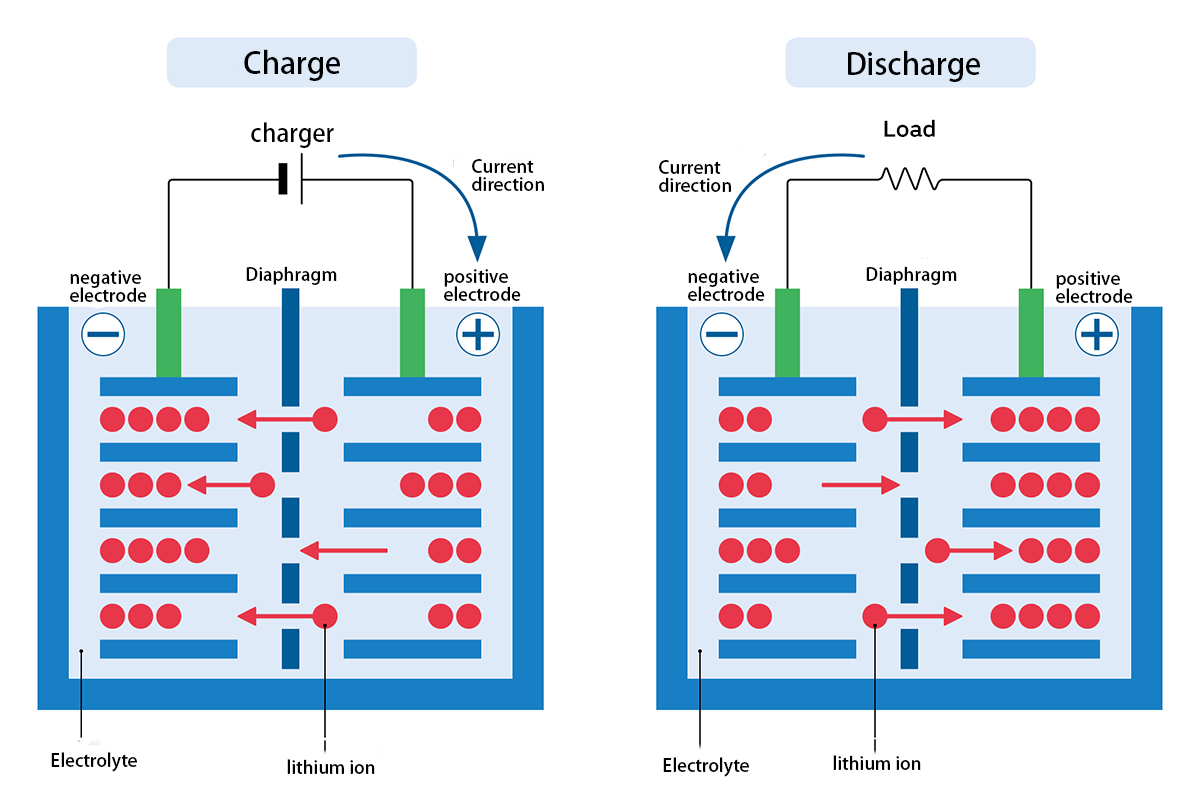Introduction:
Batteries can be broadly divided into three categories: chemical batteries, physical batteries and biological batteries. Chemical batteries are the most widely used in electric vehicles.
Chemical battery: A chemical battery is a device that converts chemical energy into electrical energy through chemical reactions. It consists of positive and negative electrodes and electrolytes.
Physical battery: A physical battery converts physical energy (such as solar energy and mechanical energy) into electrical energy through physical changes.
Chemical battery classification: From a structural point of view, it can be divided into two categories: storage batteries (including primary batteries and secondary batteries) and fuel cells. Primary batteries: can only be used once, the active material is irreversible, the self-discharge is small, the internal resistance is large, and the mass specific capacity and volume specific capacity are high.
Secondary batteries: can be charged and discharged repeatedly, the active material is reversible, and are widely used in various charging devices. Most of the models on the market currently use secondary rechargeable batteries to drive the vehicle. Secondary batteries are divided into lead-acid batteries, nickel-cadmium batteries, nickel-metal hydride batteries and lithium batteries according to different positive electrode materials. At present, the car companies in the market mainly use lithium batteries, and a few use nickel-metal hydride batteries.
Definition of lithium battery
Lithium battery is a battery that uses lithium metal or lithium alloy as positive or negative electrode material and non-aqueous electrolyte solution.
The charging and discharging process of lithium battery mainly relies on the movement of lithium ions (Li+) between the positive and negative electrodes. When charging, lithium ions are deintercalated from the positive electrode and embedded into the negative electrode through the electrolyte, and the negative electrode is in a lithium-rich state; the opposite is true when discharging.
Electrochemical principle of lithium-ion battery
Positive electrode reaction formula: LiCoO2 → Li1-xCoO2 + xLi+ + xe-
Negative electrode reaction formula: C + xLi+ + xe- → CLix
Lithium-ion batteries have high energy density, long life and low self-discharge rate, and are widely used in mobile phones, laptops and electric vehicles.
The application fields of lithium-ion batteries are mainly divided into power and non-power. The power fields of lithium-ion battery applications include electric vehicles, power tools, etc.; non-power fields include consumer electronics and energy storage fields, etc.

Composition and classification of lithium batteries
Lithium-ion batteries are mainly composed of four parts: positive electrode materials, negative electrode materials, electrolytes and battery separators. Negative electrode materials mainly affect the initial efficiency and cycle performance of lithium-ion batteries. Lithium battery negative electrodes are mainly divided into two categories: carbon materials and non-carbon materials. The most market-oriented application is the graphite negative electrode material among carbon materials, among which artificial graphite and natural graphite have large-scale industrial applications. Silicon-based negative electrodes are the focus of research by major negative electrode manufacturers and are one of the new negative electrode materials that are most likely to be used on a large scale in the future.
Lithium-ion batteries are classified into lithium cobalt oxide batteries, lithium iron phosphate batteries, ternary batteries, etc. according to the positive electrode materials;
According to the product form, they are divided into square batteries, cylindrical batteries and soft-pack batteries;
According to the application scenarios, they can be divided into consumer electronics, energy storage and power batteries. Among them, consumer lithium batteries are mainly used in 3C products; energy storage batteries are mainly used in household energy storage and distributed independent power system energy storage such as solar energy and wind power generation; power batteries are mainly used in various electric vehicles, electric tools and new energy vehicles.
Conclusion
Heltec will continue to update the popular science knowledge about lithium batteries. If you are interested, you can pay attention to it. At the same time, we provide you with high-quality lithium battery packs for you to purchase and provide customized services to meet your needs.
Heltec Energy is your trusted partner in battery pack manufacturing. With our relentless focus on research and development, coupled with our comprehensive range of battery accessories, we offer one-stop solutions to meet the evolving needs of the industry. Our commitment to excellence, tailored solutions, and strong customer partnerships make us the go-to choice for battery pack manufacturers and suppliers worldwide.
If you have any questions or would like to learn more, please don't hesitate to reach out to us.
Request for Quotation:
Jacqueline: jacqueline@heltec-energy.com / +86 185 8375 6538
Sucre: sucre@heltec-bms.com / +86 136 8844 2313
Nancy: nancy@heltec-energy.com / +86 184 8223 7713
Post time: Sep-18-2024

